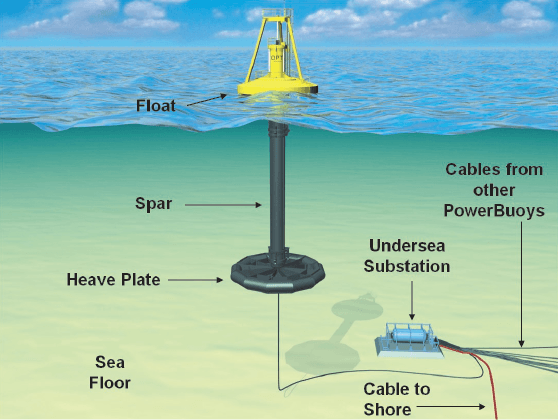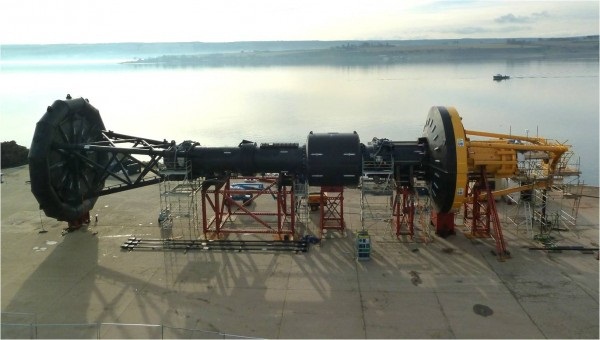A project off the Oregon coast has become the first wave-power station licensed by the U.S. Federal Energy Regulatory Commission.
The 35-year license from FERC [DOC] sets the stage for Ocean Power Technologies to install up to 10 of its grid-connected PowerBuoys off the coast near Reedsport, Ore., the company said today. The full array would have a generating capacity of 1.5 megawatts.

In an interview with EarthTechling last month, OPT CEO Charles Dunleavy said an initial test buoy being built in the Portland area was expected to be in the water by late this summer. The company said today that a build-out to the full 10-device array would be “subject to receipt of additional funding.”
Moored to the ocean floor and floating on the water’s surface, the PowerBuoy rises and falls with the waves. A power take-off system converts the mechanical stroking that results from this motion to drive a generator, and power goes ashore via a cable buried 3 to 6 feet into the seabed.
The company says such a system would operate at a capacity factor of 30 to 45 percent – at or above the capacity factor of large-scale wind – with better predictability than wind power production.
The Oregon buoys are to go in about 2.5 miles off the coast. According to the FERC license, the 10 units would be deployed in an array of three rows about 330 feet apart, with a footprint of about 30 acres. The installation would also include a subsea pod, about 6 feet by 15 feet, that would tie together the array. With just shy of 30 feet of each PowerBuoy extending above the water, the devices would hardly noticeable from shore. Still, OPT has had to work hard to gain approval for the novel project in an area with many competing interests – including fishing, environmental and recreation.
A key step in that process came two years ago when the company reached a settlement agreement with various federal and state agencies and three nongovernmental groups — Oregon Shores Conservation Coalition; Surfrider Foundation; and Southern Oregon Ocean Resource Coalition — that outlines how the project can move foward. “FERC gave strong consideration to the agreements set forth in the (settlement agreement) in determining key provisions of the license,” the company said in its announcement today.
OPT said it has received funding for the Oregon project from the U.S. Department of Energy, “with the support of the Oregon Congressional delegation, and from PNGC Power, an Oregon-based electric power cooperative.”

OPT deployed a PB150 in Scotland, in March 2011, and reported in July 2011 that over the course of two months, the turbine generated between 45 kilowatts during low tide up to 400 kW during violent storms, putting it on track to average out at 150 kW. Versions of the device have also been tested in Hawaii and Spain.
CEO Dunleavy said in the interview with EarthTechling that the extensive testing of the PowerBuoy over the last few years had demonstrated that “the technology as is now configured is salable into commercial markets.” But with wave power in its infancy, he added that the PowerBuoy was “at an early commercial level” and that the company was “constantly looking for ways to improve it.”
Earlier this summer, OPT announced it would partner with Lockheed Martin to develop a 19-megawatt, government-backed wave power array in Australia.